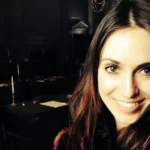THIS IS THE SIXTH YEAR that Benco Dental and Incisal Edge have honored a sextet of remarkable women for their contributions—both in the past and ongoing—to the profession to which we’ve dedicated our lives. In many ways, the Lucy Hobbs Project has never felt more urgent, more necessary. With countless industries reeling from #MeToo scandals that have toppled titans, consolidating women’s gains in dentistry—and ensuring equal access and opportunity for the female practitioners, hygienists and other staffers of tomorrow— is truly vital. With that in mind, read the profiles on the pages ahead advisedly: These six laudable women (and one male Trailblazer from Benco Dental whose support for the Lucy Hobbs Project has been invaluable) are working their hardest to ensure that our profession remains equitable—and honorable—for decades to come.
ABOUT LUCY HOBBS
BORN IN MARCH 1833 in upstate New York, Lucy Hobbs intended to pursue a career in dentistry from an early age—a thing that simply wasn’t done by a woman in nineteenth-century America. Shunted aside at nearly every turn, she persevered, in 1866 becoming the first American woman to earn a degree in dentistry, which she practiced until her death in October 1910.
In the late 1800s, Hobbs got involved with her local chapter of the Queen Isabella Association, perhaps the country’s first-ever professional women’s organization. Named for the Spanish monarch who sponsored the voyages of Christopher Columbus, the group advocated for women’s rights in the home—and, even more so, in the workplace, making the case that professional women were in every measure equal to their male counterparts.
In 2013, Benco Dental inaugurated the Lucy Hobbs Project in her honor, celebrating the achievements of women in dentistry and empowering them to drive change and deliver success through networking, innovation and giving back. In this, the Project’s sixth year, that mission is more critical than ever, and Benco Dental and this magazine are proud to be behind it.
INDUSTRY ICON
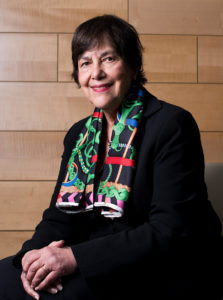 Dr. Athena S. Papas
Dr. Athena S. Papas
Age: 72
City: Boston
Affiliation: Oral Medicine Division, Department of Diagnostic Sciences, Tufts University School of Dental Medicine
Specialty: Oral medicine, dentistry
Education: DMD, Harvard University School of Dental Medicine; Ph.D. in oral biology, Massachusetts Institute of Technology
THROUGHOUT HER career as an oral-health crusader (including as a strong advocate for AIDS patients at the height of the epidemic); as an expert in Sjögren’s syndrome, an autoimmune saliva disorder; and as head of the Tufts University School of Dental Medicine’s oral-medicine division, Dr. Athena S. Papas has racked up so many laurels that you could be forgiven for thinking the Industry Icon award might be nothing more than just a paperweight to her.
Not so. “It means a lot to be recognized as a woman,” Dr. Papas says. With nine dentists in her immediate family, and having grown up surrounded by the dentist friends of her dentist mother, “I had no clue as a child that women were not supposed to be dentists. When I applied to dental school, [that] was the first time I realized there were no women in dentistry.”
Initially, Harvard wouldn’t even send her an application. She was admitted to Tufts, but “chickened out” because she would have been her class’s only female student. She chose instead to go to MIT, where she completed her Ph.D. in isolating the enamel proteins that control mineralization—her first foray into the study of saliva. Her work and grades caught Harvard’s attention, and this time it asked her to apply.
“I said, ‘But you don’t accept women,’ and they said, ‘Well, we’re trying,’ ” Dr. Papas recalls with a mordant laugh. “I said, ‘I won’t go alone.’ ” So Harvard admitted two women to its class of 1974, the first since World War II: Dr. Papas and Dolores Mercedes Franklin, an African-American.
After graduating, Dr. Papas took a job at Tufts, where she’s been ever since. There she has written a textbook on aging and developed programs for the elderly. In the 1980s, when AIDS ran rampant, she was a pioneer in treating Kaposi sarcoma—tumors that formed inside patients’ mouths. Upon its establishment in 1988, she was named the first dental director of the New England AIDS Education and Training Center in Boston, through which she taught dentists across the area how to control infection. Tufts, meanwhile, received a significant grant from the Ryan White HIV/AIDS Program, which enabled her to continue her vital efforts on Sjögren’s, cancer and more.
It means a lot to be recognized as a woman. I had no clue as a child that women were not supposed to be dentists.”
Indeed, her work since has focused on providing new treatments for Sjögren’s and other conditions that cause dry mouth. She has received more than $24 million in grant money to further her work; her benefactors include the National Institutes of Health and the federal Department of Agriculture.
Access to crucial outside money is a cutthroat competition, Dr. Papas observes, but she offers this advice: “Get your education, get your credentials, start small, show that you can produce,” she says. “Then you can work your way up.” Solid advice regarding grants, one’s profession and even life itself, given by a woman who from the start forged her own path when none existed.
HUMANITARIAN
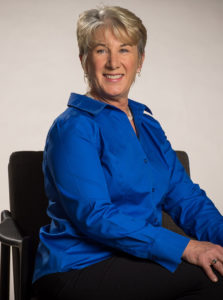 Dr. Sharon K. Parsons
Dr. Sharon K. Parsons
Age: 62
City: Bexley, Ohio
Name of Practice: Dental Associates, Sharon K. Parsons, DDS
Specialty: General dentistry
Education: DDS, The Ohio State University College of Dentistry
DR. SHARON K. PARSONS had an excellent reason for missing this year’s Lucy Hobbs Celebration in San Francisco in September: She was watching with satisfaction as the Ohio Dental Association passed a policy on opioid use and prescription that she had spent much of the past year lobbying for.
In voting yes, the ODA was expressing support for a policy the American Dental Association proposed in April that would require dentists to take continuing-education courses on the prescription of opioids and other controlled substances. The ADA approved this policy in October.
The battle is highly personal to Dr. Parsons, whose son passed away in 2015 after struggling with opioid addiction for six years. Ohio’s passage of the policy ahead of the ADA’s official adoption of it, she says, signifies that Buckeye State dentists recognize—with some chagrin, surely—the role many play in introducing young people to opioids and want to learn more about how to recognize and prevent drug addiction. (Her work with youths is no one-off, either; Dr. Parsons gave the keynote speech at this year’s Lucy Hobbs YOU event at the University of Detroit Mercy School of Dentistry)
“We may very well be [young people’s] first taste of something, and what leads to their addiction,” she says. “As people learn about addiction and the part they play in it, we can definitely save lives and create fewer future addicts.”
As dentists learn about addiction and the part they play in it, we can definitely save lives.
According to the ADA, dentists were the top specialty prescribers of opioids in 1998, accounting for 15.5 percent of all prescriptions in the U.S. By 2012, that share had fallen to 6.4 percent. That’s good news, certainly—but continuing education about addiction remains a necessity, Dr. Parsons says, because “we didn’t learn about that at dental school.”
The problem is piercing, and difficult to stay on top of. “Between the ages of 13 and 26, your prefrontal cortex is still forming,” she adds. “In that age group, if you’re exposed to opioids, you’re five times more likely to become addicted.” (Her son was 21 when he first tried the drugs.)
Dr. Parsons, who will become the third female president of the Ohio Dental Association next October, says she wants people to understand that drug addiction is a disease, not a choice, and that studies show a combination of ibuprofen and acetaminophen is more effective than opioids at treating acute oral discomfort. “You really have to be careful,” she cautions. “You don’t need an opioid for pain relief. If you really think [a young person] needs it, give it to their parents.”
INNOVATOR
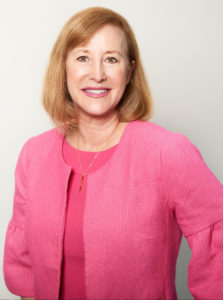 Diane Johnson Krueger
Diane Johnson Krueger
Age: 62
City: Houston
Affiliation: NuSmile
Specialty: Certified Dental Technician
Education: Certified Dental Technician, National Association of Dental Laboratories
WHEN DIANE JOHNSON KRUEGER thinks about the state of children’s oral health in the Houston area even as recently as the 1980s, one thing stands out above all.
“Every time you looked around, you’d see kids with stainless-steel crowns on their front teeth,” she remembers. “That was the option covered by Medicaid. It broke my heart.”
Seeking to tackle the problem at its root, in 1991 Johnson Krueger founded her company, NuSmile, to improve the clinical practice of pediatric dentistry. One of the first products it brought to market: a stainless-steel crown with a tooth-colored coating.
That alone was a significant breakthrough: Studies have long shown that children with such obvious tooth restorations are treated differently by peers, teachers and other adults, and the attendant psychological effects can be tremendous. That first product cemented NuSmile’s reputation as a leading provider of esthetic pediatric crowns. It took Johnson Krueger another 10-plus years to see them adopted nationwide by universities—and covered by Medicaid. “It’s been kind of a long haul, but it’s been for the good of the profession and, I think, for the good of the children,” she says.
It’s been a long haul, but it’s been for the good of the profession—and the good of the children.
NuSmile, meanwhile, has continued to evolve: It now makes zirconia pediatric crowns as well as improved posterior stainless-steel varieties. In late 2016, it acquired Avalon Biomed, the maker of a non-staining, quick-setting material called NeoMTA Plus that’s popular with endodontists.
While Johnson Krueger remains deeply in-volved in clinical and academic research and engaging with pediatric-dentist clients, she spends a great deal of time on regulatory matters. Both NuSmile’s quality assurance and regulatory departments have expanded, she says, as the company works to get more of its restorative materials approved in international markets and covered by Medicaid. Thinking back to Houston all those decades ago, she says she has always considered NuSmile’s primary audience to be kids. It sells to endodontists and general and pediatric dentists, sure, but children are never far from her mind.
MENTOR
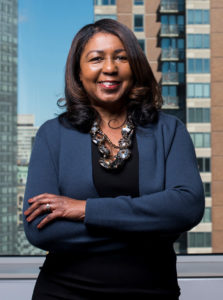 Dr. Jeanette Sabir-Holloway
Dr. Jeanette Sabir-Holloway
Age: 64
Cities: Boston and Indianapolis
Name of Practice: Sonrisa, a Periodontal Spa, Tufts University School of Dental Medicine
Specialty: General dentistry
Education: DDS, Indiana University School of Dentistry
AS DIRECTOR OF the Increasing Diversity in Dentistry Pipeline program, which she launched nearly a decade ago, Dr. Jeanette Sabir-Holloway has crisscrossed the country to visit and mentor at college campuses. IDID, as it’s known, identifies and supports promising dental students from educationally and economically disadvantaged backgrounds. Dr. Holloway and others mentor them throughout their time in dental school, hosting networking events and taking groups to national conferences. For their part, the students commit to practicing in an underserved community for at least two years after they finish school—a pitch-perfect example of dentists paying it forward.
Dr. Holloway isn’t just a mentor, however: She founded IDID in 2009 while serving on the admissions committee at Indiana University’s School of Dentistry. She was one of just three African-American students when she entered dental school there in 1976, and the only one to graduate in 1980. Decades later, she says, she came to realize that “not much has changed.”
We need applicants to go to dental school who look like all the people in this country.
Through one-on-one counseling of potential applicants, she “noticed that many minority students needed additional assistance for their applications to be better-prepared. We need applicants to go to dental school who look like all the people in this country.”
Now, as director of outreach, recruitment and admissions at Tufts University School of Dental Medicine, Dr. Holloway organizes a 10-day orientation program for new students from disadvantaged backgrounds. She also runs an annual IDID Symposium, which brings students to Tufts for workshops taught by current dental students.
Her efforts are bearing fruit: Tufts now boasts one of the most diverse dental programs in the country. Some 28 percent of the class of 2022 are of minority backgrounds underrepresented in dentistry, she says. “The [Lucy Hobbs Mentor] award gives more exposure to the program and school, and what we consider important at Tufts,” she says. “When a university promotes diversity, it creates a space for everyone to thrive.”
WOMAN TO WATCH
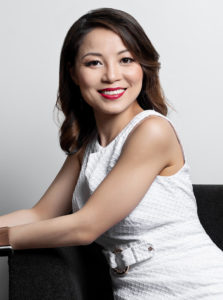 Dr. Rita Y. Chuang
Dr. Rita Y. Chuang
Age: 37
City: Torrance, California
Name of Practice: Breeze Orthodontics
Specialty: Orthodontics
Education: B.A., Cornell University; DDS, University of Southern California School of Dentistry; orthodontics specialty, University of Pennsylvania Department of Orthodontics
“DR. RITA,” as her patients affectionately call her, sees hundreds of teen and preteen visitors at her Los Angeles–area practice every year. She treats their teeth and fixes their smiles,
certainly, but in the hour or so that she spends with each young charge, she feels a strong responsibility to do even more.
“I went into orthodontics because I feel my calling strongly as an educator and empowerment coach,” Dr. Chuang says. “In that slice of time, I get to be their coach, their cheerleader, someone who is there to mentor and advocate for them. I feel honored to have the opportunity to motivate them and find out what sparks them in life.”
Her patients typically come to her during a crucial period of rapid growth—physically, mentally and emotionally. Dr. Chuang recalls one memorable child, just 9 years old at her first treatment, who covered her entire face with her hair because, she said, she was insecure about her appearance and had a hard time making friends. During their appointments, Dr. Chuang worked hard to reassure her, inviting her to open up about her insecurities and address them so she could become more open to connecting with others. “Little by little, I got her to open up to me and the world, and she began to show an eyebrow, then an ear, then eventually her face,” she says. That patient is now 12 years old, and is “funny and pretty confident,” she says.
I get to be my patients’ cheerleader, their coach— someone who really wants to be there for them.
Before becoming an orthodontist-cum–youth counselor, Dr. Chuang served as Clinical Director of the University of Pennsylvania Department of Orthodontics. A board-certified orthodontist, she shared her cutting-edge expertise on esthetics in her chapter contribution to The Million-Dollar Smile: Changing Lives With Cosmetic Dentistry, published this spring by Blue Ocean Publishing Group.
Her enthusiasm for academics and her impressive clinical expertise—she is a graduate of two Ivies, Cornell and Penn, in addition to the University of Southern California—is matched by her passion for understanding and mastering the softer interpersonal arts that keep her patients content and healthy. “I feel like my job is more fun than work,” she exults. “When patients walk into my office, they’re in one condition—and when they walk out, they’re happier and healthier.”
CLINICAL EXPERTISE
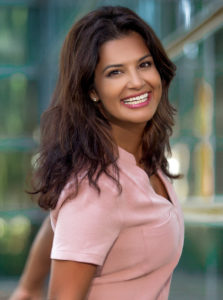 Dr. Sabiha Bunek
Dr. Sabiha Bunek
Age: 39
City: Ann Arbor, Michigan
Name of Practice: Bunek Dental Studio
Specialty: General dentistry
Education: DDS, Universty of Michigan School of Dentistry
WHY, EXACTLY, WAS Dr. Sabiha Bunek an easy choice to be honored by the Lucy Hobbs
Project this year? Let us count the ways: She is a dentist, lecturer and chief executive officer of Dental Advisor, a sort of Consumer Reports for the profession. She has been named one
of the top 10 young educators in the U.S. by Seattle Study Club; one of the top 25 women
in dentistry by Dental Products Report; and in 2013 was one of Incisal Edge’s 40 Under 40.
An adjunct clinical assistant professor at the University of Michigan School of Dentistry (her alma mater) and an adjunct scientist at the Hous-ton Center for Biomaterials and Biomimetics at the University of Texas at Houston School of Dentistry, she presented this summer in New York on the topic of how technology can increase dentists’ return on investment. Oh, she’s also a mother of two and recently opened a private practice.
Dentistry and being a mommy of two little ones is a big balancing act. But I don’t think I could do one without the other.
“It’s a big balancing act trying to educate and being a mommy of little ones,” Dr. Bunek says one morning after dropping her kids off at school. “But I don’t think I could do one without the other. People can get complacent. I feel like technology has added so much to dentistry that if we don’t educate ourselves, we aren’t doing as much as we can.”
An editor at Dental Advisor for six years and its CEO since 2015, she says she is also driven by a distinct sense of duty. “I got exposed to the research world, and they often speak a totally
different language. They’re brilliant, but sometimes they’re not as clear,” she notes. Dental
Advisor helps “bridge the gap between research and clinical dentistry.”
Having opened her solo practice in Ann Arbor only in October, Dr. Bunek has applied such tech-and-research knowledge to that aspect of her professional life. The new space, she says, will be “a place to learn,” equipped with Cone Beam technology, photo- and video-capturing microscopes and iPad software to help her communicate with patients during diagnosis and treatment. It is, she says, “a whole new arena in dentistry.” By our count, that makes roughly a half-dozen dental arenas in which this self-assured go-getter is highly visible—and increasingly proficient.
All Class
Michael Paquette helps bring the Lucy Hobbs Project to dental schools, where tomorrow’s dentists, increasingly, are women.
DENTISTRY IS JUST as much art as it is science, and Michael Paquette’s career began on the aesthetic side of the ledger, when he worked as a draftsman designing dental offices at only 17 years old.
After earning his undergraduate degree from Michigan’s Ferris State University, he shifted to dental sales for 11 years, then joined Benco Dental, where he has spent two decades. Currently a Territory
Representative for the Great Lakes Region, he’s based in Northville, Michigan, a suburb of Detroit. Among his leading responsibilities: developing relationships that help align the Lucy Hobbs Project with dental schools—a vital effort for the Project and women in dentistry alike.
Women’s role in the profession, he observes, has evolved significantly in recent years. “For the first time, women now make up a majority of dental-school students, and the number of female solo practitioners is increasing as well,” he says. “The Lucy Hobbs Project has given me the perfect vehicle to connect with and support the largest demographic
of new dentists.”
Paquette’s work has spurred one of the Lucy Hobbs Project’s most exciting new initiatives: Through collaboration with the University of Detroit Mercy School of Dentistry, he championed “Lucy Hobbs YOU,” a collegiate event that brings together students, faculty, alumni and area professionals to foster the core Hobbs Project virtues of networking, innovation and giving back. He’s seeking partnerships with dental schools across the country, and the second annual event at UDM took place this October.
“The fact that Lucy Hobbs would never take no for an answer when work-ing toward her dream to be a Doctor of Dental Medicine has always inspired me,” says Paquette, 52. “My father, my greatest mentor, always told me to lead by example and show my daughters”—he has two, teenagers Mallory and Paige—“what working hard in the service of others really looks like.” —Kristie Ceruti
Golden State Warriors
CALIFORNIA’S CENTER FOR ORAL HEALTH WAS THIS YEAR’S LUCY HOBBS BENEFICIARY.
SINCE ITS INCEPTION a half-dozen years ago, the Lucy Hobbs Project has always hewn closely to its three core tenets of helping women in dentistry through networking, innovation and giving back. That last attribute—a boundless spirit of charitable endeavor—pervades the Project, and the 2018 Lucy Hobbs Celebration, held over three days in September in San Francisco, offered ample evidence.
This year’s Lucy Hobbs Project partner beneficiary was the Pomona, California–based Center for Oral Health, an organization that has done heroic work since its 1985 founding (as the Dental Health Foundation) to “improve oral health, especially of vulnerable populations, through innovation, research, education and advocacy,” as it puts it. Although it has focused primarily on oral health in California, its success has spurred requests to duplicate its model nationwide. In 2017, it opened its first Integrated Delivery Model Dental Clinic in Tampa to help bring dental care to needy populations in central Florida. For more information, please see centerfororalhealth.org.
Lucy And Yo
SPREADING THE HOBBS spirit to students nationwide.
SHARING THE MESSAGE of the Lucy Hobbs Project with the next generation of dentists is just as important as the work it does with today’s professionals. One vital new component is Lucy Hobbs YOU—collegiate outreach spearheaded by 2018 Trailblazer Michael Paquette.
The second annual YOU event took place October 11 in the Motor City, in conjunction with the University of Detroit Mercy School of Dentistry. The keynote speech was given by
Dr. Sharon K. Parsons, this year’s Lucy Hobbs Humanitarian and the president-elect of the Ohio Dental Association—who in the face of great personal loss has become a passionate advocate for opioid awareness among dentists.
The event also included a student-driven panel discussion, “Redefining Having It All,” featuring a half-dozen young women and moderated by Michelle Szewczyk, a member of Detroit Mercy’s class of 2019. It all benefited Sanctum House, a “safe home” in the Detroit suburb of Royal Oak, Michigan, where survivors of human trafficking can begin to rebuild their lives. Sanctum House offers a 24-month program of shelter, personal development and education for women 18 years of age and older, and works to raise awareness of the often-overlooked plague of human trafficking. For more, please visit sanctumhouse.org.
Likewise, for more information about Lucy Hobbs YOU or any aspect of the Lucy Hobbs Project, please see thelucyhobbsproject.com, where you can learn about the Project’s namesake, hear from its honorees, join the organization (it’s free!), learn about upcoming events and much more.



